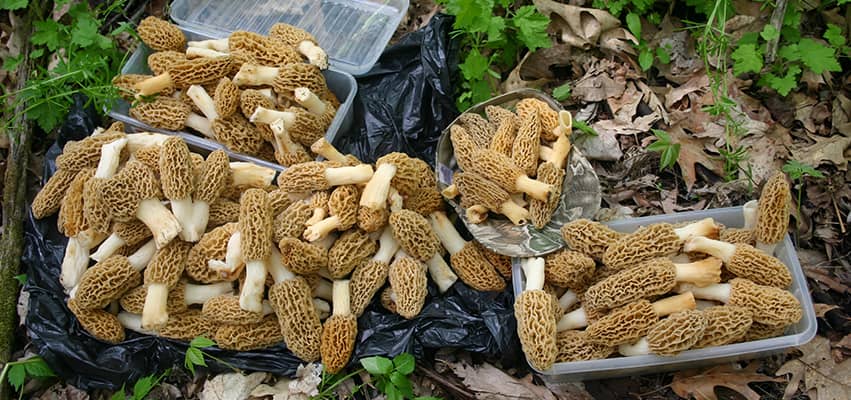Your Next Meal… And Much More

Robert McCloskey wrote of the “edible fungus” in the wilderness that kept the early settlers from starvation in the fictional Homer Price. While this song is part of a fictional story, it does underscore the popularity of wild mushrooms. Commercially available buttons, portobellos, shiitakes and other varieties just aren’t enough for those who prefer foraging for wild mushrooms throughout Illinois.
Morel mushrooms definitely rule the spring, but there are quite a number of other edible mushrooms that can be found growing in Illinois, including pheasant backs, oysters, chicken-of-the woods, chanterelles, lion’s mane, black trumpets and my personal favorite, the hen-of-the-woods.
Facts About Fungi
While many people are avid foragers, some may not know what mushrooms are. Mushrooms are the fruiting bodies of larger organisms called fungi. Fungi typically grow as a dense mass of thread-like cells called mycelium.
Think of a mushroom as the apple and the fungus as the tree. If you ever pulled loose bark off of a rotting log, the white or light brown threads that fan out across the surface of the rotting wood is part of the mycelium and is the main body of the fungus. As mycelium collects energy and grows, it can produce mushrooms for reproduction, to form and release spores.
Types of Fungi
There are many different types of fungi and not all of them produce mushrooms. Even the mushroom-producing types of fungi vary greatly in their life histories. Some grow on living trees, others only on dead wood, and still others are only found growing out of the soil. One strange fungi, the lobster mushroom, is actually a parasitic fungus that attacks other fungi.
Fungi are not like plants—they do not produce their own food through photosynthesis. Instead, fungi capture their energy from other sources. Many species are pathogenic, meaning they attack and feed off other organisms.
The honey mushroom fruiting bodies are a select, edible mushroom. But the fungus itself, Armillaria ostoyae, is actually a serious forest disease that infects trees, causing the roots and lower trunk to decay, potentially killing the tree.
Other fungal species are saprophytic, feeding on dead organic matter. Morels fall into this category. Some saprophytic mushrooms, such as chicken-of-the-woods and oyster mushrooms, grow on dead wood. Others grow on organic material in the soil.
A third group of mushrooms are mutualists. These species work with their host organism to the mutual benefit of both species.
Many of our native plant species actually need the help of a fungus to grow. These fungi will associate with the roots of plants to form structures called mycorrhizae that help uptake nutrients and transport water to the plant roots.
Edible mycorrhizal mushrooms include chanterelles, which are some of the most common edible mushrooms growing in Illinois during the summer, and truffles, which compete with morels as the most famous wild mushrooms worldwide.
Mushrooms in the Ecosystem
All of these wild edible mushrooms, along with the thousands of non-edible species, are incredibly important to the ecology of our native ecosystems. Wood-rotting fungi help create dead snags and tree cavities that are critical habitat for many wildlife species. Saprophytic fungi help create rotting logs, which are home to many insects, salamanders and even frog species.
These fungi also enrich the soil through the release of nutrients by decomposing organic matter. Mycorrhizal fungal in the soil are a vital link to the diversity of plant species in native forests. The next time you are out foraging for wild edible mushrooms, you can appreciate these wonderful organisms for more than just their taste. PM
Chris Evans is an Extension forestry and research specialist and interim state coordinator for the Extension Master Naturalist Program.
